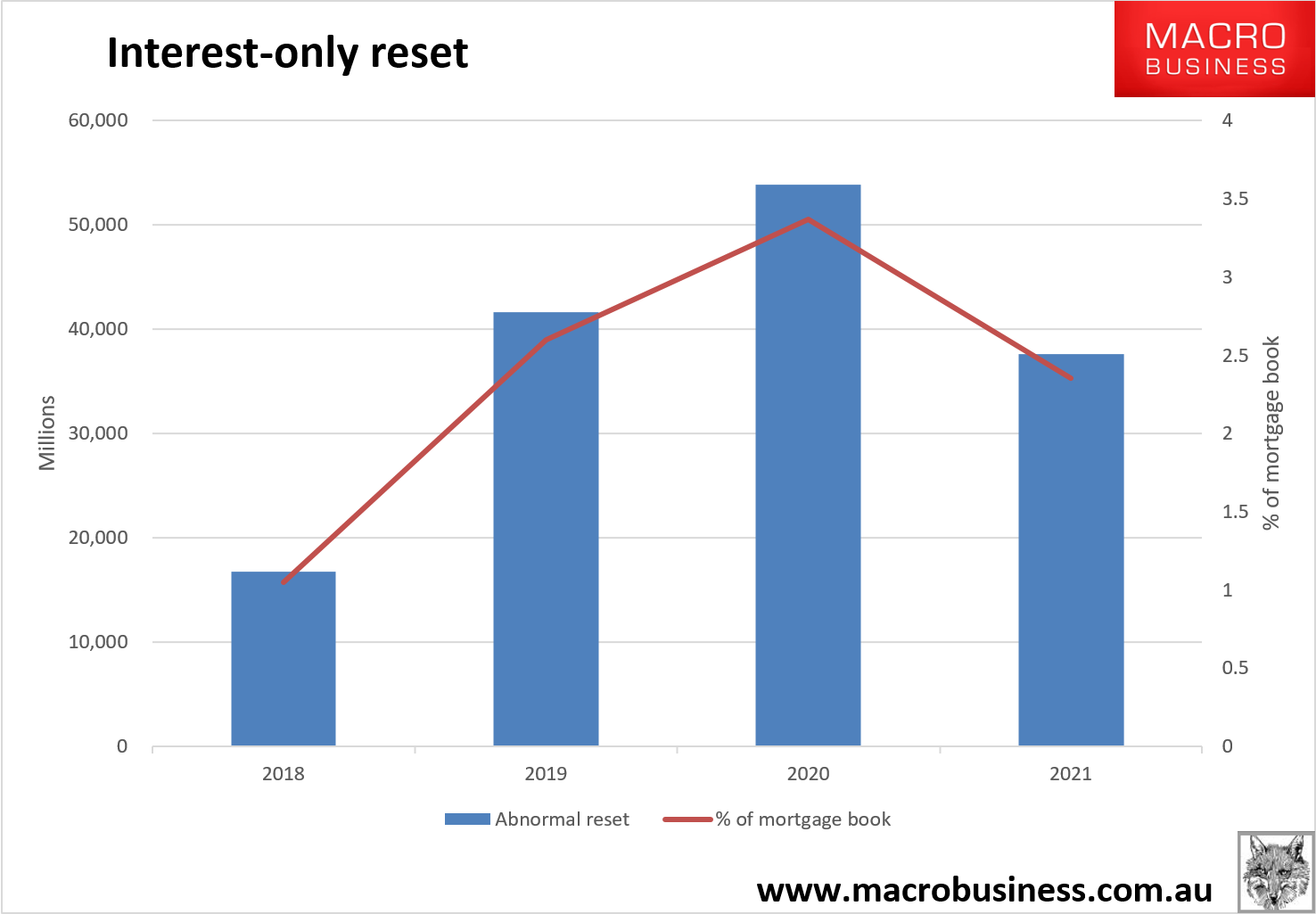Via the AFR:
Westpac, which includes Bank of Melbourne, BankSA and St George Bank, is warning that from next Monday borrowers switching from residential investment loans to owner occupied will need to provide more evidence so the banks can “continue to meet regulatory requirements and strengthen controls”.
It includes providing the banks with utility, council or water rates within the past three months for the property where the mailing address matches the security address.
Alternatively, they will need to provide a copy of the current insurance certificate showing whether the property is an owner occupied, or investment.
I put it to you that is to ensure that the bank has sufficient headroom to roll over those in genuine distress from the interest-only reset.
There is confusion about how much the back book and front book of the banks can absorb the reset. Banks can only issue 30% of new loans as interest-only now. That’s roughly $40bn per quarter which would mean that the reset could absorb the bank’s entire front book IO capacity. So some large portion will have to transpire in the back book. My best guess how much that will be based upon the history of what the banks have managed previously, I’ve guessed they will be able to manage $25bn per quarter in the back book as the great reset builds. That means we’ll see the following total resets to principle and interest:

At the peak, that’s 3-4% of the loan book being shocked by 40% repayment hikes. It’s bloody big.

